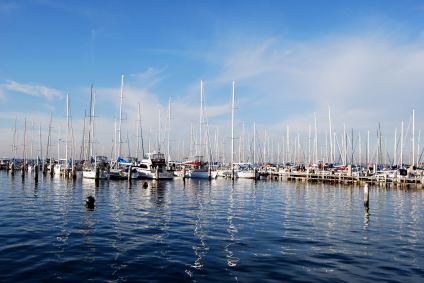Population 229,420 (2015) (12th) Chairperson Dr Kathy Alexander Federal Division(s) CorangamiteCorio Founded 1993 Gazetted 18 May 1993 | Established 1993 Region Barwon South West Area 1,247 km² | |
 | ||
State electorate(s) BellarineGeelongLaraSouth Barwon Colleges and Universities Marcus Oldham College Points of interest Eastern Beach, Lake Connewarre, Geelong Botanic Gardens, Port Phillip Heads Marine N, Swan Island Destinations | ||
City of greater geelong mayor cr darryn lyons clip 2
The City of Greater Geelong is a local government area in the Barwon South West region of Victoria, Australia, located in the western part of the state. It covers an area of 1,247 square kilometres (481 sq mi) and, at the 2011 Census, had a population of 210,875. It is primarily urban with the vast majority of its population living in the Greater Geelong urban area, while other significant settlements within the LGA include Anakie, Balliang, Barwon Heads, Batesford, Ceres, Clifton Springs, Drysdale, Lara, Ocean Grove, Portarlington and St Leonards. It was formed in 1993 from the amalgamation of the Rural City of Bellarine, Shire of Corio, City of Geelong, City of Geelong West, City of Newtown, City of South Barwon, and parts of Shire of Barrabool and Shire of Bannockburn.
Contents
- City of greater geelong mayor cr darryn lyons clip 2
- Map of Greater Geelong VIC Australia
- History of former municipalities
- Administrators
- Composition until April 2016
- Former and current Mayors
- Former and current Deputy Mayors
- Administration and governance
- Localities
- Sister cities
- References
Map of Greater Geelong, VIC, Australia
The City is governed and administered by the Greater Geelong City Council; its seat of local government and administrative centre is located at the council headquarters in Geelong, it also has service centres located in Drysdale, Ocean Grove and several other locations within Geelong. The City is named after the main urban settlement located in the centre-west of the LGA, that is Geelong, which is also the LGA's most populous urban centre with a population of 143,921.
History of former municipalities
Sourced from Appendix V, A Journey to Destiny 1890–1990 – 100 Years of Cement Manufacturing at Fyansford by Australian Cement Limited .
Administrators
In December 2015, the Minister for Local Government Natalie Hutchins appointed a Commission of Inquiry into the Greater Geelong City Council in response to concerns about the workplace culture and adequacy of governance structures.
The Inquiry found that the council is riven with conflict, unable to manage Geelong's economic challenges, has dysfunctional leadership and has a culture of bullying.
On the recommendation of the Commission, the Victorian Government dismissed the entire Greater Geelong City Council on 16 April 2016 and appointed Yehudi Blacher as interim administrator. On 25 May 2016, Dr Kathy Alexander (chairperson), Peter Dorling and Laurinda Gardner were sworn in as administrators, replacing Yehudi Blacher.
Under the Local Government (Greater Geelong City Council) Act 2016, the panel of administrators constitutes the Greater Geelong City Council, and has the same functions, powers and duties as the Greater Geelong City Council and its councillors. Likewise, the chairperson of the panel of administrators has the same functions, powers and duties as the mayor of the council.
The council will be run by administrators until fresh council elections are held in 2017.
Composition until April 2016
Until its dismissal on 16 April 2016, the council was composed of a directly-elected Mayor, representing the whole of the municipality, and twelve councillors, each representing one of the twelve wards.
Former and current Mayors
Former and current Deputy Mayors
Administration and governance
The council meets in the council chambers at the council headquarters in the Geelong Town Hall Offices, which is also the location of the council's administrative activities. It also provides customer services at its service centres in Belmont, Corio, Drysdale, Geelong West, Ocean Grove, Waurn Ponds and on Brougham St in Geelong.
Localities
Localities which encompass the City of Greater Geelong include:
Sister cities
Geelong has sister city relations with the following cities:
